Jelly rot or trembling Phlebia (Phlebia tremellosa) grows throughout North America, Europe, and Asia. It is a wood-decay fungus that spreads naturally across fallen trunks and branches of deciduous hardwoods. It sometimes appears on conifers, too. This fungus doesn’t look like a traditional mushroom; it doesn’t have a clearly defined cap, gills, or stem. Instead, it grows like a crust on wood surfaces and is distinguished by how its upper edge folds over.
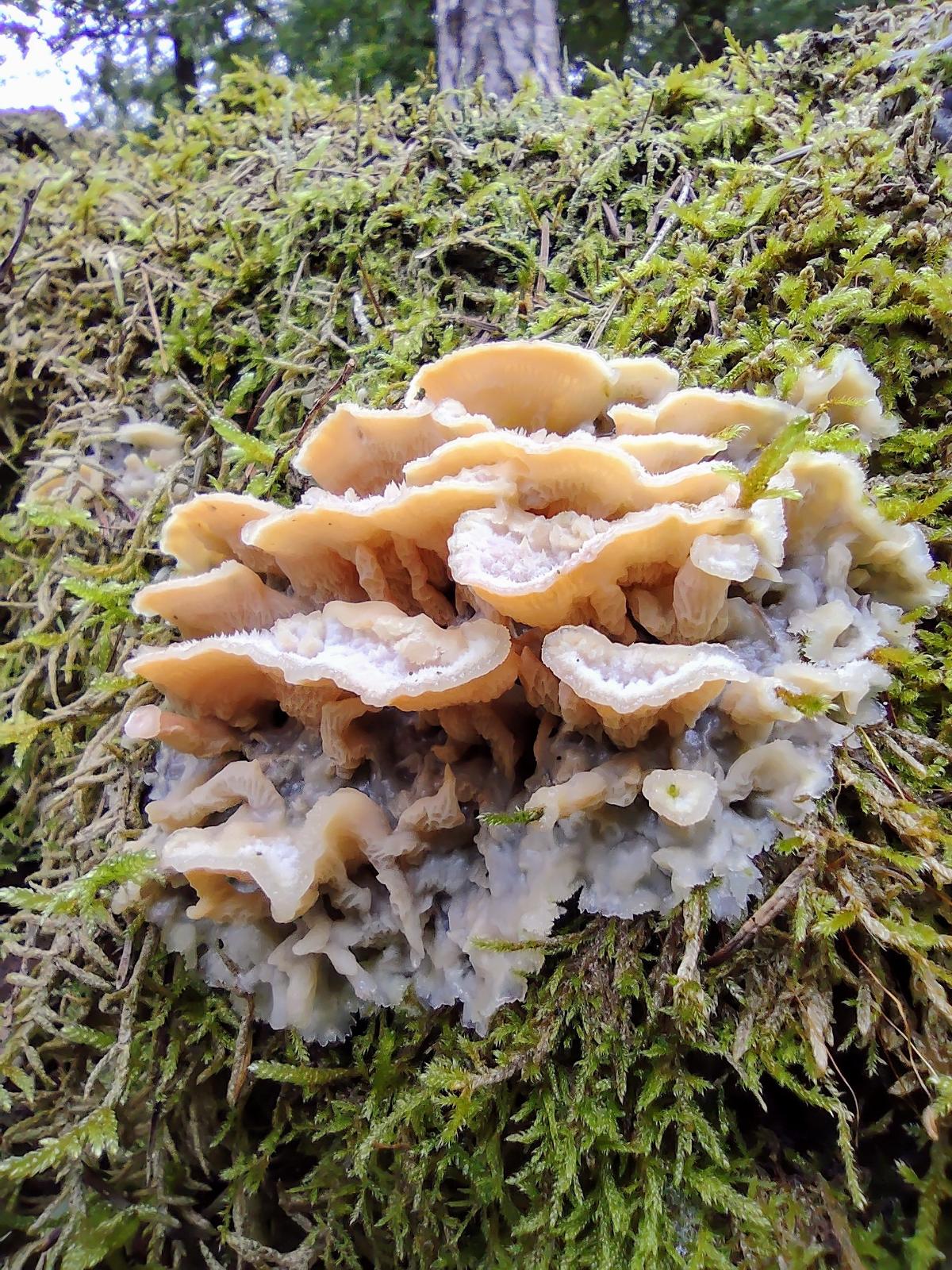
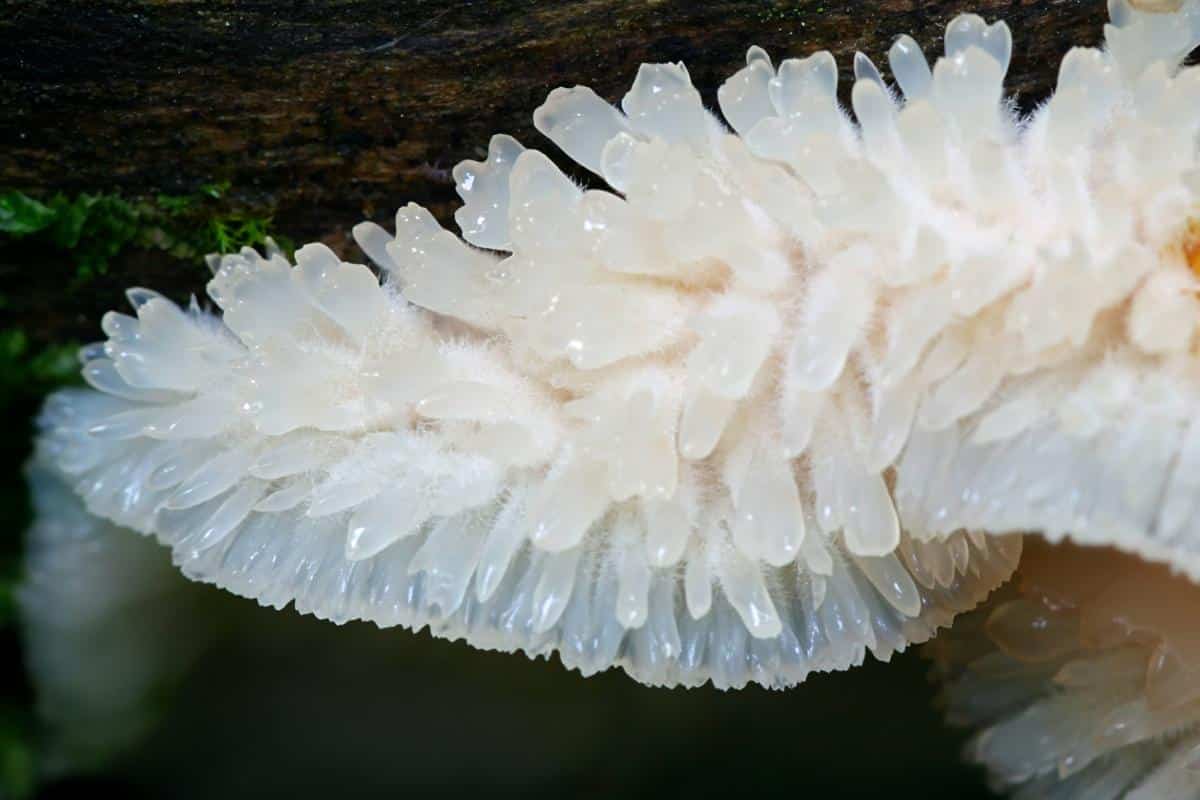
Jump to:
All About Trembling Phlebia
German botanist Heinrich Adolf Schrader first described this mushroom in 1794. He gave it the name Merulius tremellosus. In 1984, mycologists Karen Nakasone and Harold Burdsall moved the species from Merulius to Phlebia based on their morphological studies.
The genus name Phlebia comes from the Greek “phleps,” which means “vein.” This name describes the characteristic veined appearance of the fungus’s spore surface. The specific epithet “tremellosa” comes from the Latin word for “trembling.” This name perfectly describes how mature fruiting bodies wobble when they’re touched.
This mushroom has several descriptive common names, including Jelly rot, Trembling Merulius, trembling crust, and gelatinous woodcrust. The Dutch call it Spekzwoerdzwam, which translates to bacon-pork rind mushroom. This is because the caps look somewhat bacon-like when they grow.
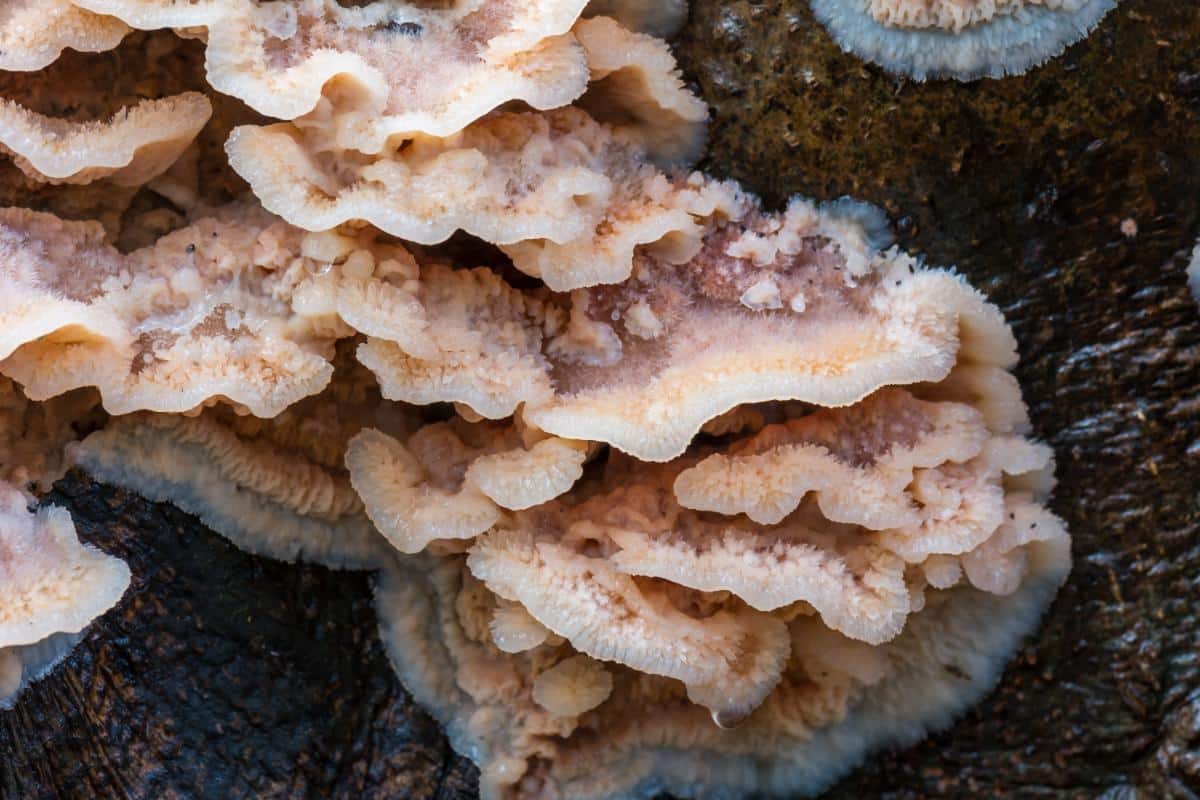
Trembling Phlebia Identification Guide
Season
The trembling crust fungus appears in late spring through fall in most areas. In warmer climates, it might also grow in winter. In the Pacific Northwest, it is more often a fall and winter mushroom.
Habitat
Trembling Phlebia fungi grow on dead wood from hardwoods. They are most often on oak, beech, birch, maple, and ash trees. It may also grow on conifer wood, too. These mushrooms prefer fallen logs, rotting stumps, and dead standing trees rather than living trees.
This jelly rot fungus is found most often in damp, shaded spots where humidity helps its jelly-like growth. It prefers dense forests with lots of deadwood. However, this mushroom is very adaptable and can be found in urban parks and managed woodlots that have dead wood.
The trembling Merulius is widespread across North America and is most common on the East Coast, through the Midwest, and along the West Coast. Its spread isn’t even.
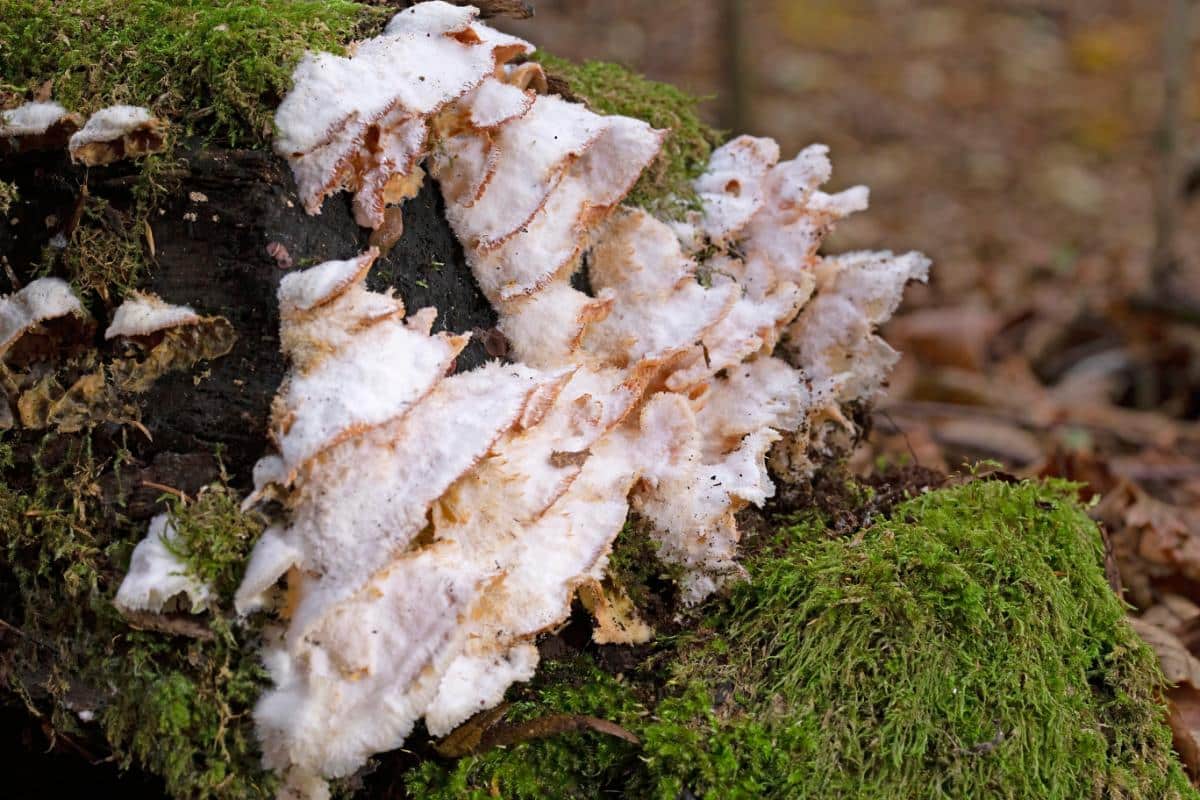
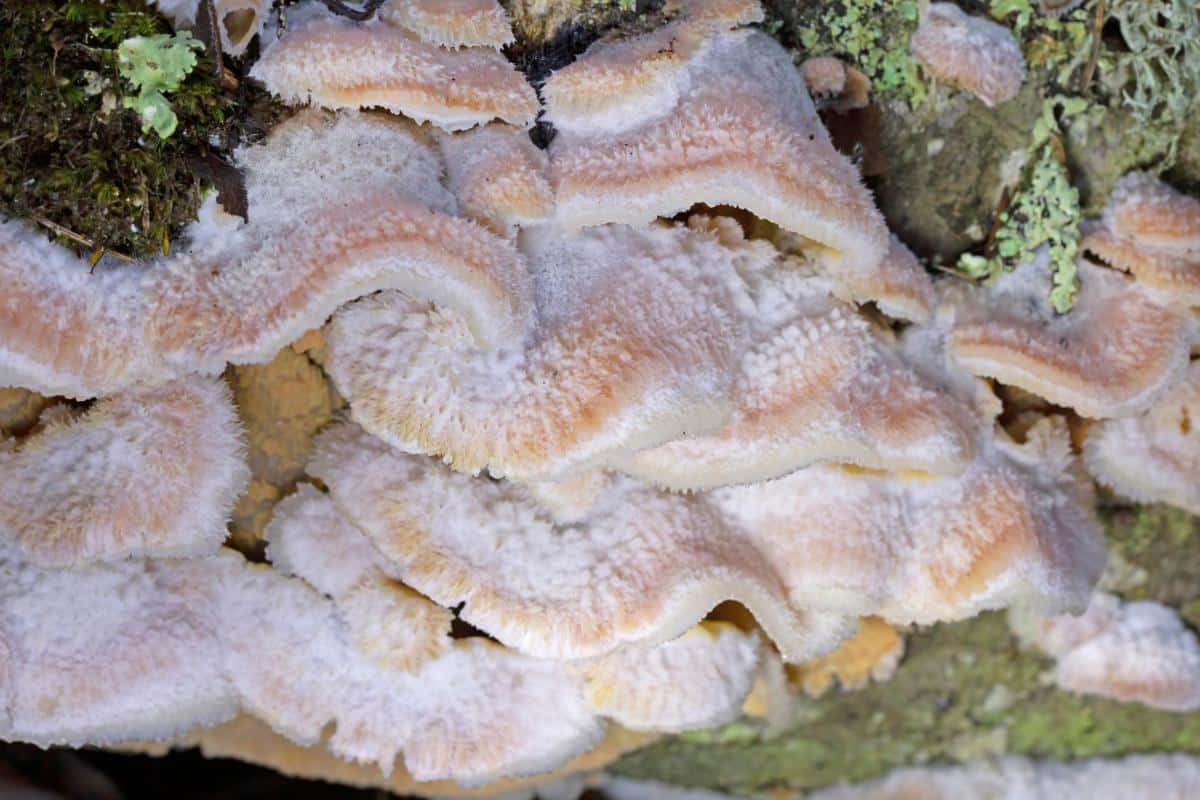
Identification
Body
This mushroom grows as irregularly shaped fruiting bodies that average 2-4 inches wide and 5-10 inches long. They can be quite expansive. They often spread across large areas of dead wood. They are fan-shaped to semicircular and don’t have a stem. The flesh is quite thin—about 2 mm thick—which gives it a delicate look despite its extensive coverage. As the mushroom matures, several often merge together to create larger, connected patches across the wood surface.
The trembling Phlebia is white to pale yellow and is hairy or woolly to the touch. It also might have small white protrusions, like little gelatinous teeth, on top. The surface of the mushroom might be dry or moist, depending on the weather and whether it has rained recently. Underneath the cap, the spore surface is yellowish orange to pinkish orange, and the colors deepen as the fungus ages. The surface has an intricate network of wrinkled ridges and crossveins.
The texture of this mushroom is one of its key identifying features. Its flesh is fleshy to gelatinous and becomes almost jelly-like in wet weather. The fruiting body has a rubbery, flexible feel. The flesh shrinks and darkens when it is very dry and becomes tough and leathery.
The growth pattern of trembling phlebia is described as “effused-reflexed”. This means it starts out flat, but its upper edge eventually folds back beyond 90° to form a bracket-like cap. It creates more pronounced bracket-like projections or lobes on vertical surfaces. You may find this mushroom in its flat form or in its folded-back bracket cap form.
The spore print is white.
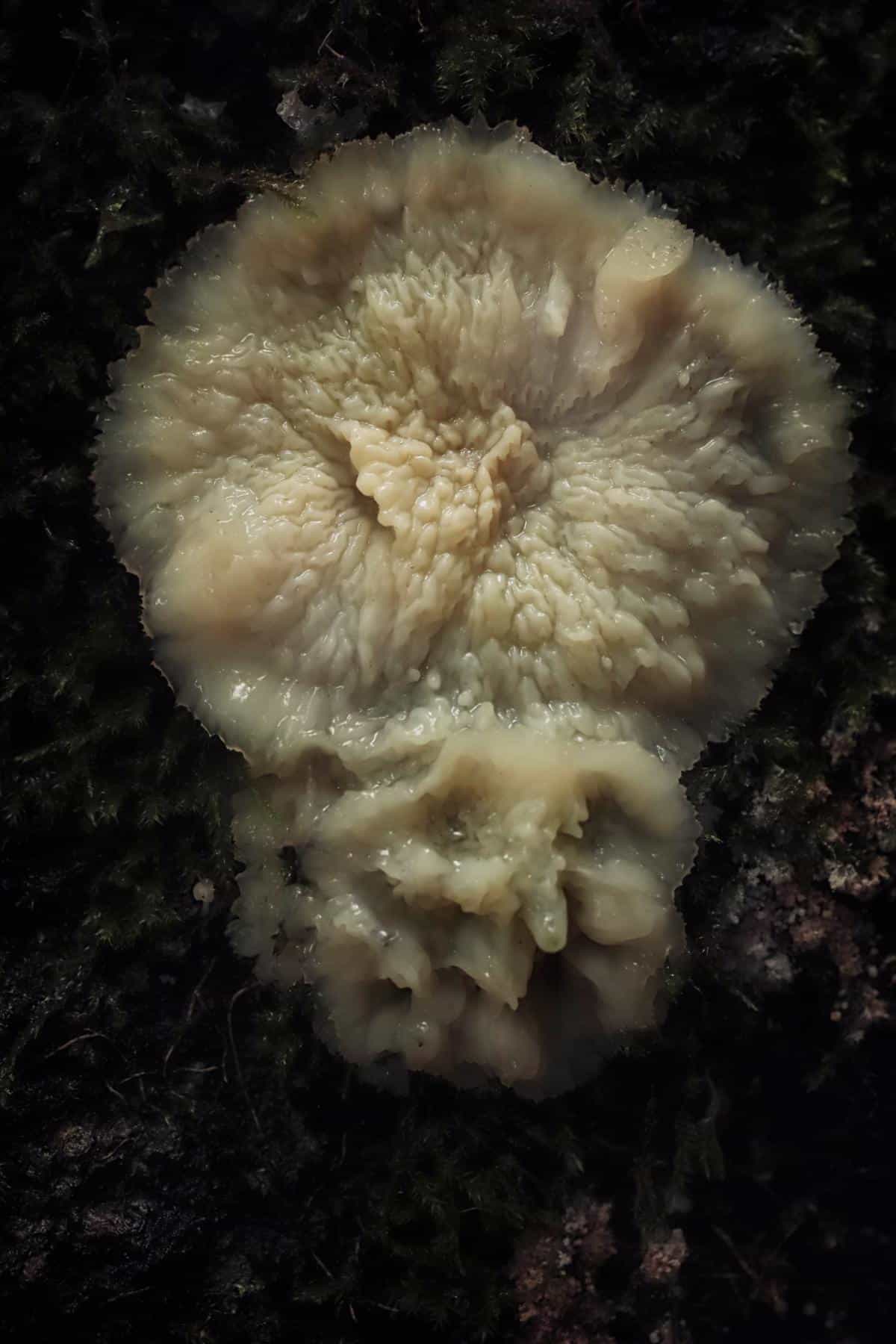
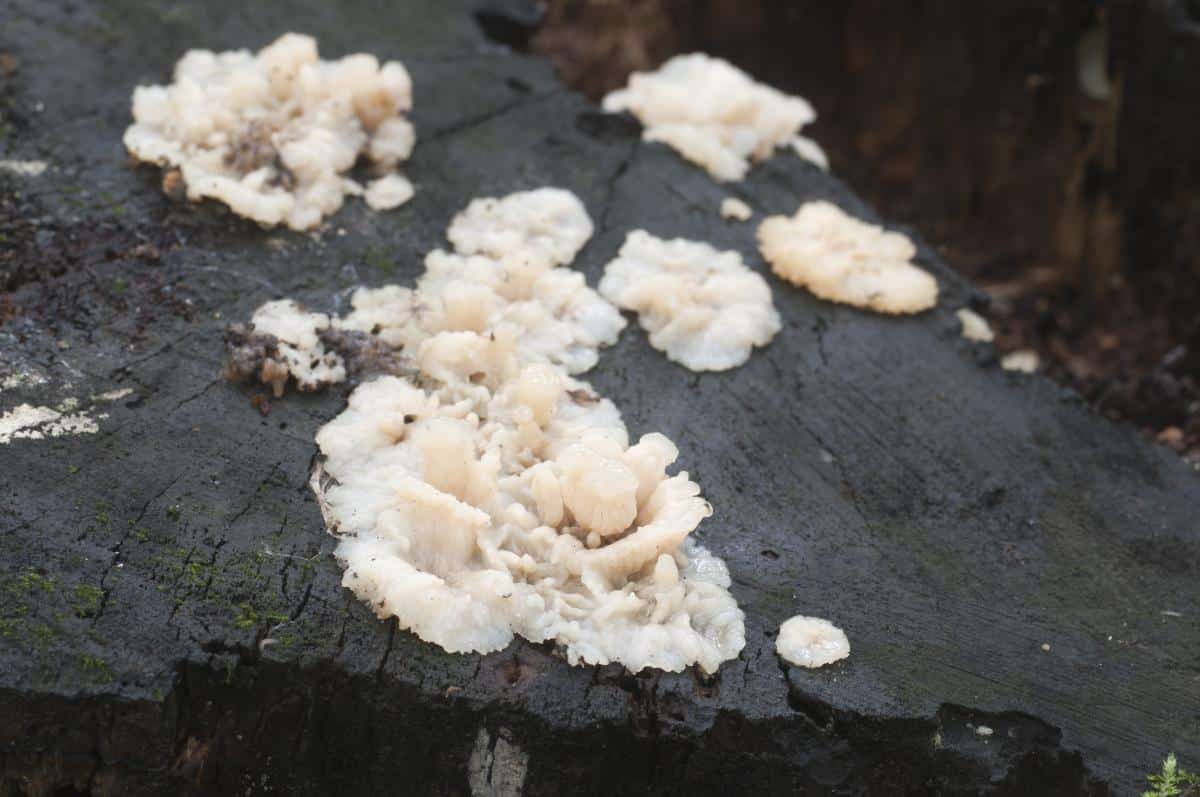
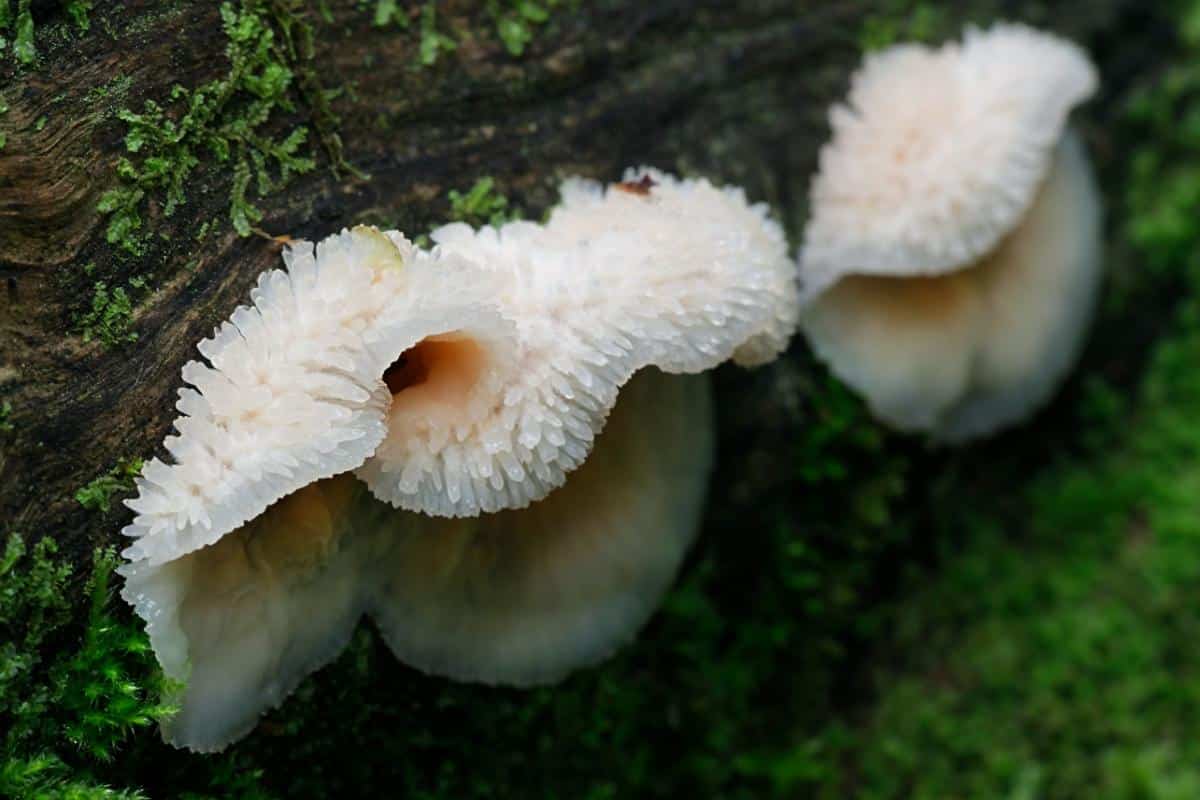
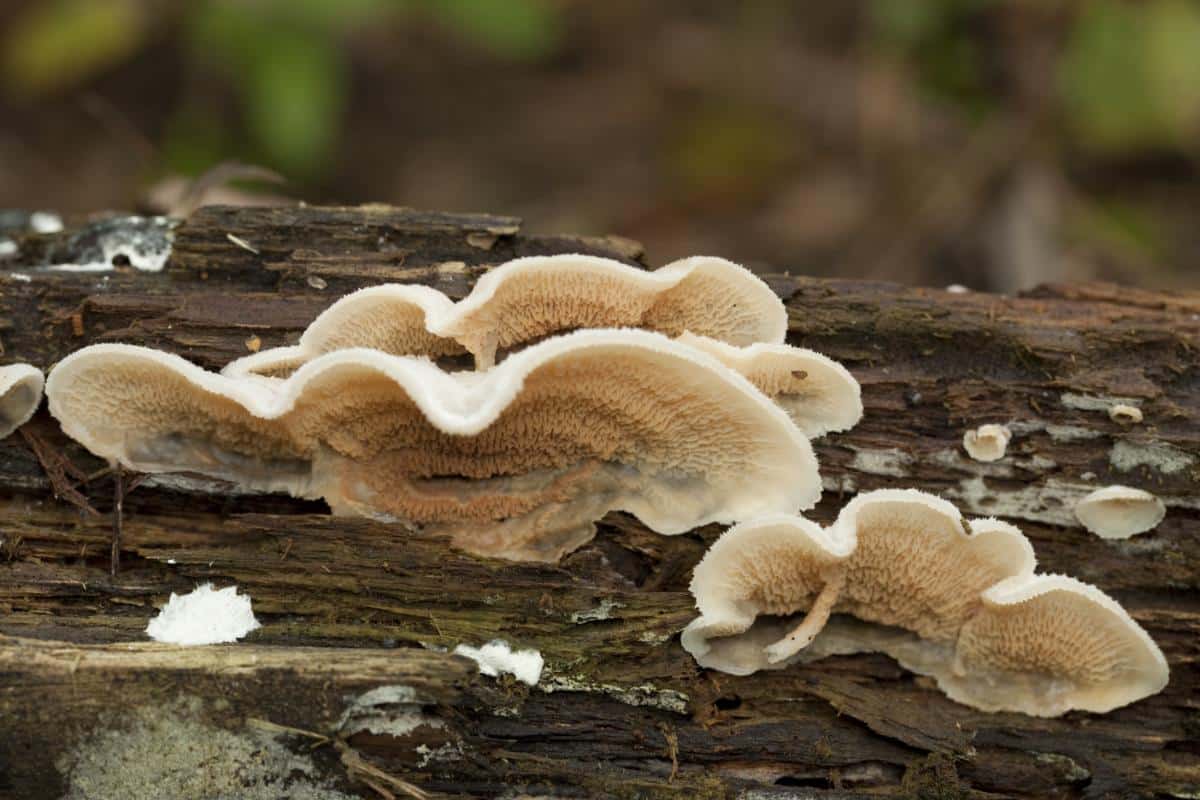
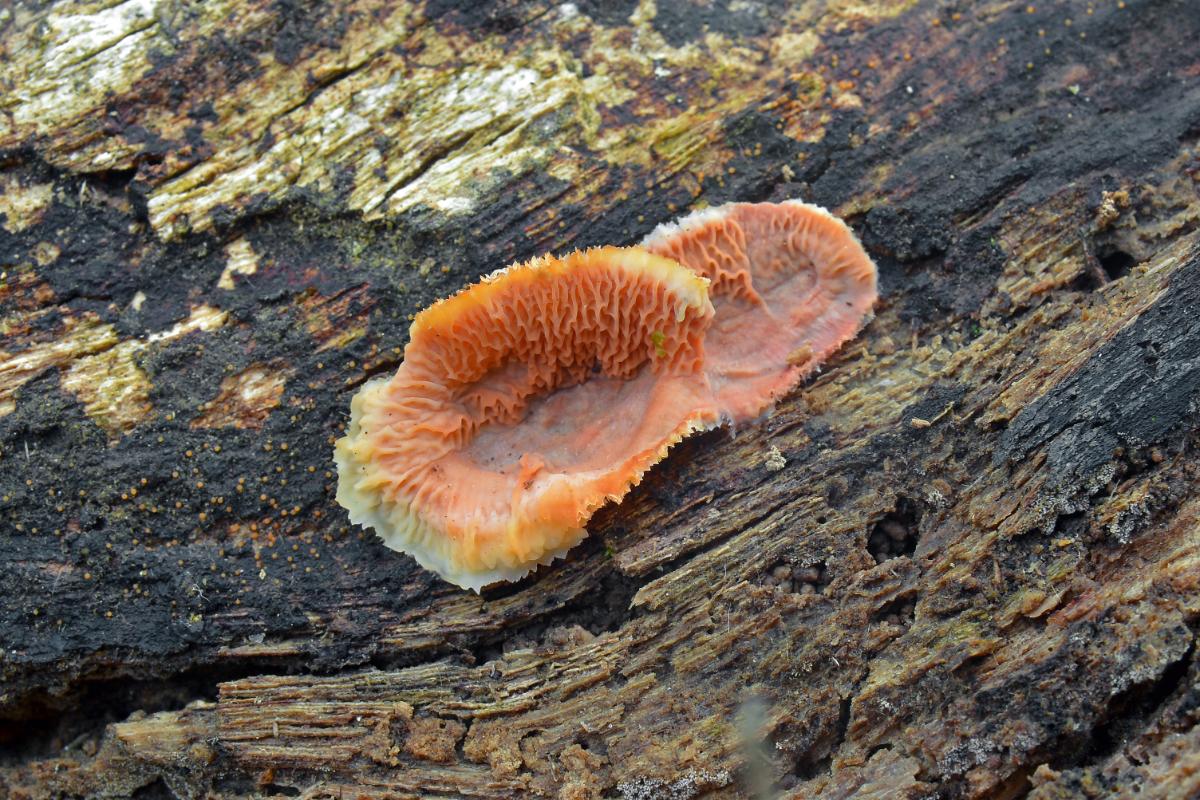
Trembling Phlebia Ecological Role
This jelly rot fungus is saprobic, which means it breaks down dead organic matter and gets its nutrients there. It is a white rot fungus that leaves behind whitish, fibrous residue after decomposition.
The fungus grows either alone or in groups on wood surfaces. It forms overlapping clusters that create large sheets on decaying wood when conditions are right. This clustering helps the mushroom cover more of its substrate. The fruiting bodies last only one year rather than being permanent.
The trembling Phlebia never attacks living trees but colonizes them only after death. It releases enzymes that break down wood and turn tough lignin into softer fungal tissues during decomposition. This creates homes for bacteria and beetle larvae, which then speed up the decomposition process. Teamwork like this leads to quick recycling of nutrients back into the soil, and that supports new forest growth.
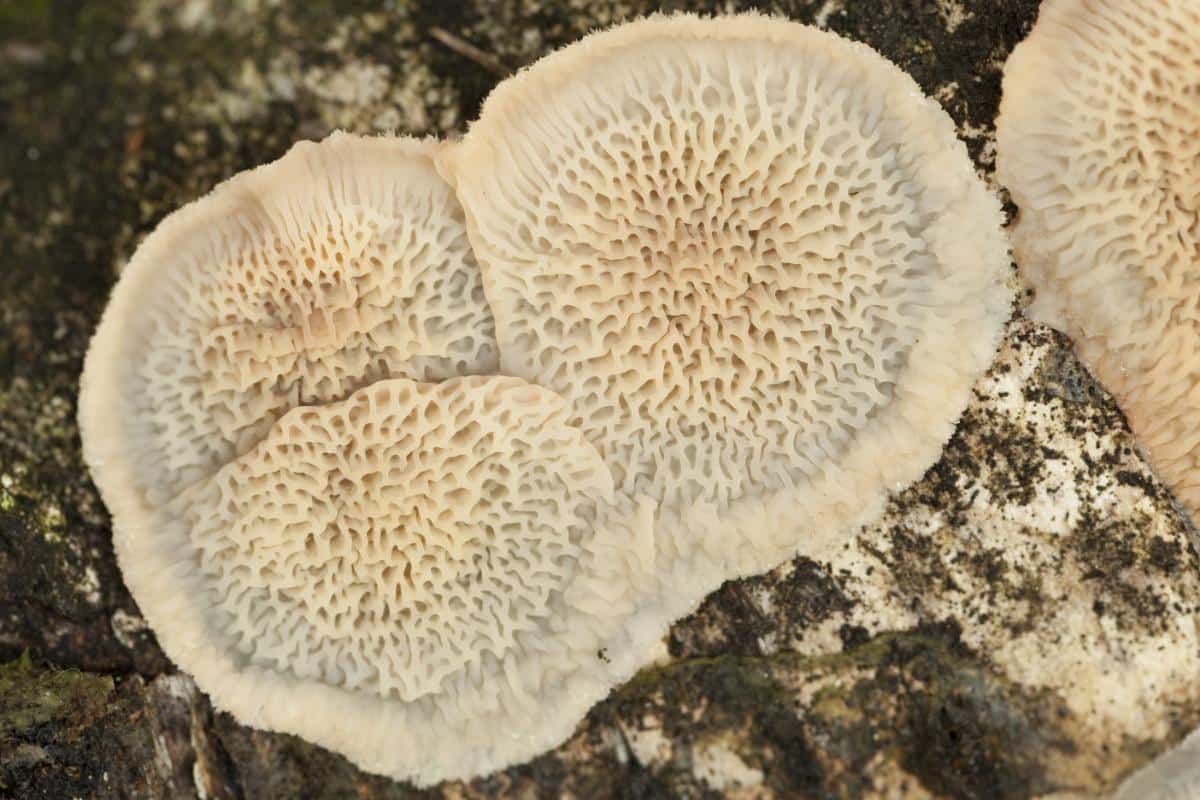
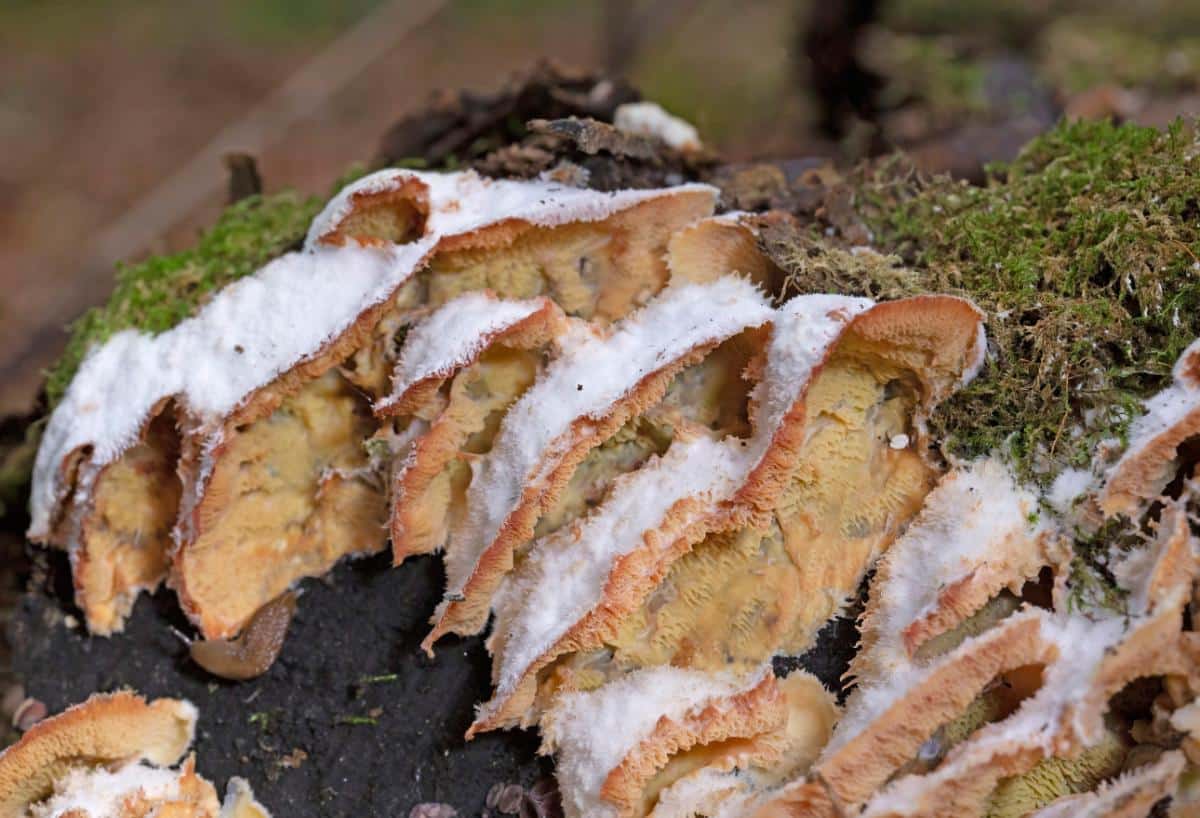
Trembling Phlebia Ediblility
The trembling phlebia won’t poison you, but it’s not exactly edible either. This is primarily due to its gelatinous or rubbery texture. It is also super bland, so there isn’t any draw to eat it for flavor either.
Some foragers have tried using trembling Phlebia to thicken their stocks and broths, hoping its jelly-like texture would help. This worked, but it didn’t add any additional flavor or texture to the stock.
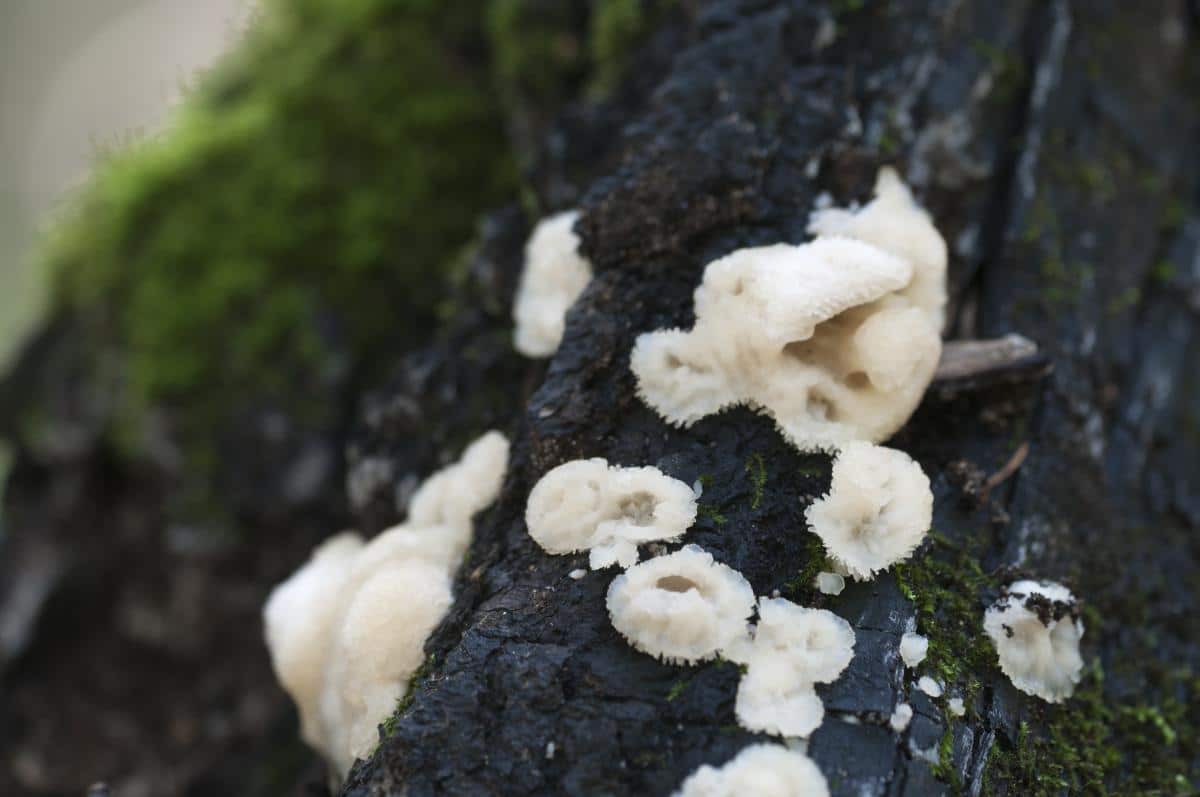
Trembling Phlebia Look-Alikes
Wrinkled Crust (Phlebia radiata)
There can be a lot of confusion between these two closely related species: The wrinkled Crust is different because it doesn’t produce caps. Trembling phlebia creates bracket-like extensions at its upper edges. Also, the wrinkled crust grows in a more radial pattern and stays completely flat against the wood surface. It does not create folds or caps like the trembling Phlebia.
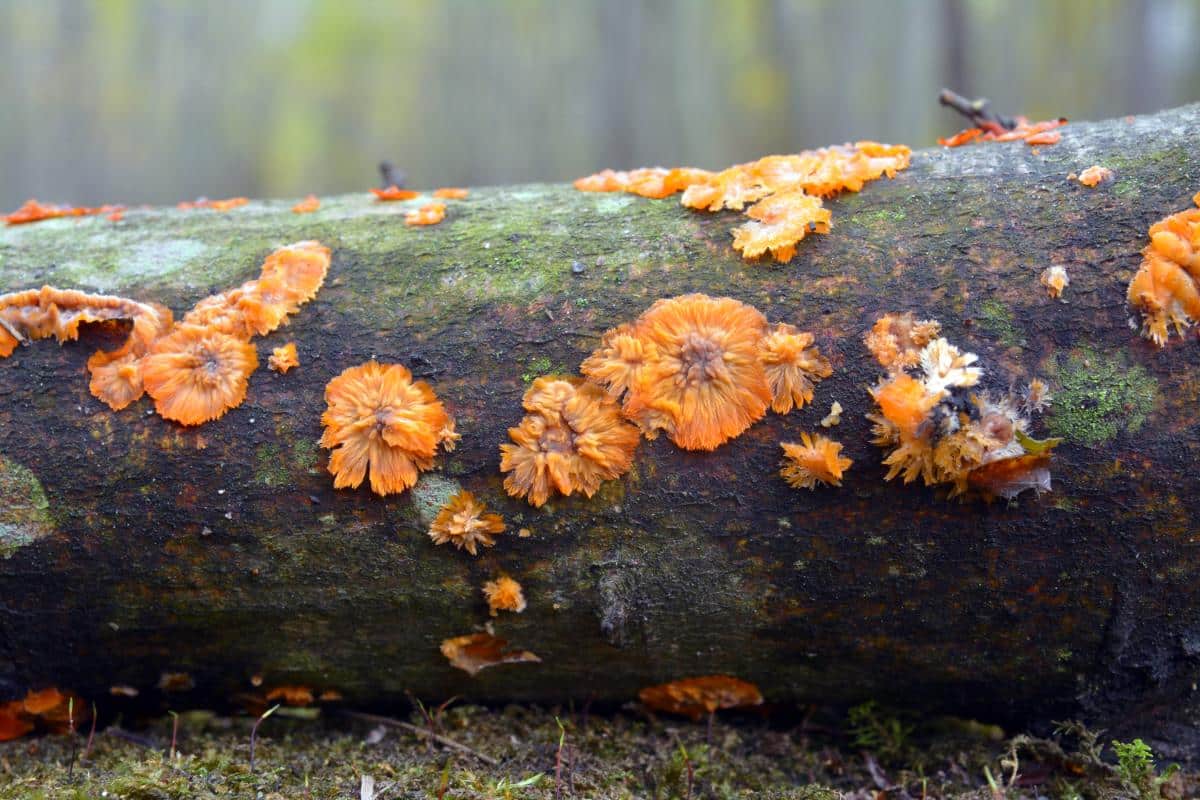
Netted Crust (Byssomerulius corium)
This species is also similar to the trembling Phlebia. It is a white crust fungus that also grows on dead hardwood. However, it is not the bright orange-pink color of trembling phlebia.
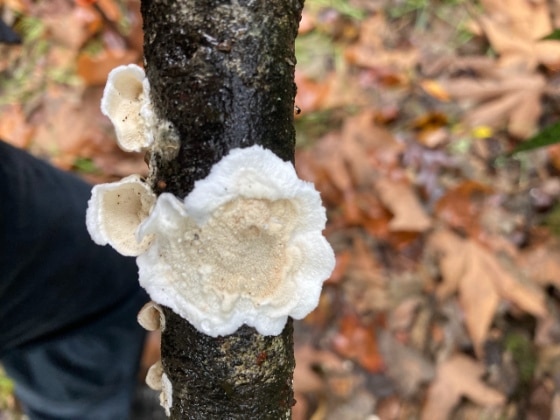
False Turkey Tail (Stereum hirsutum)
The false turkey tail is a bracket fungus with an orange patterned cap. However, the colors on the cap appear in concentric zones. Plus, it has a velvety surface and a cream to yellowish underside. This is very different from the wrinkled, pinkish-orange fertile surface of trembling phlebia.
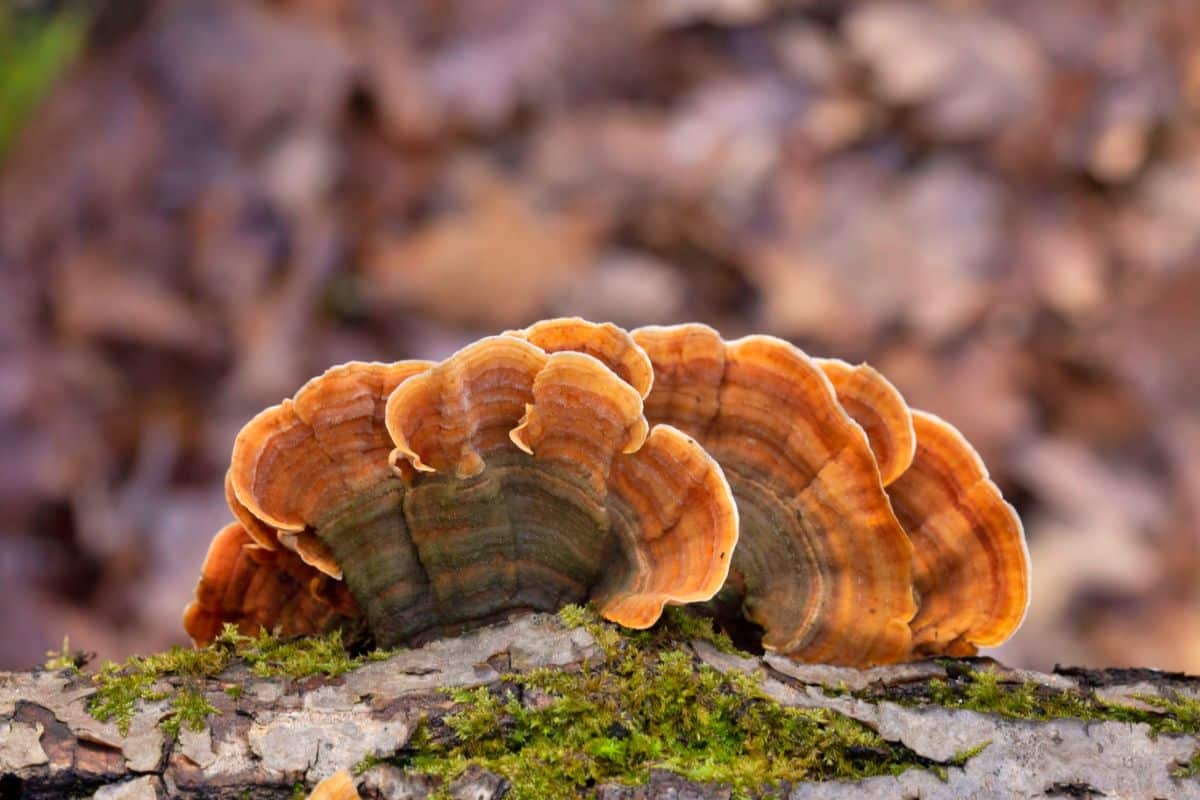
Jelly Rot Mushroom Medicinal Uses
Scientists have discovered that Phlebia tremellosa has higher in-vitro ACE-inhibition activity than the well-known medicinal Ganoderma lingzhi (Reishi). This discovery matters because ACE inhibition is used to develop treatments for hypertension, one of the leading risk factors for cardiovascular diseases.
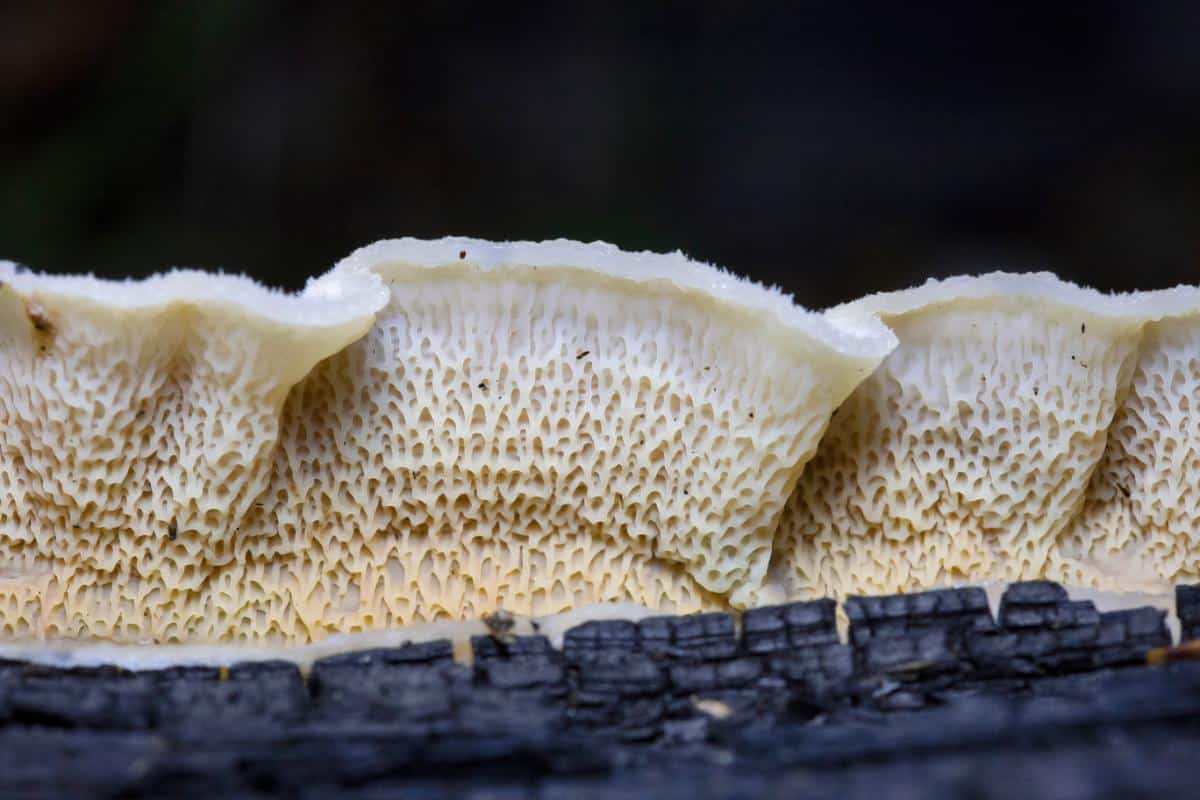
Key Takeaways
• Distinctive appearance: Look for semicircular, 2-4 inch fruiting bodies with gelatinous texture, pinkish-orange undersides, and white wooly upper surfaces on dead hardwood.
• Habitat and timing: Look around fallen logs and stumps in deciduous forests after it rains, especially during the fall in North America.
• Key identifying feature: Look for the “effused-reflexed” growth pattern. This pattern happens when flat surfaces bend over, creating cap-like structures. This helps to tell it apart from other flat-crust fungi.
• Ecological importance: This white rot fungus plays a crucial role in forest health by decomposing dead wood and recycling nutrients back into soil ecosystems.
• Edibility: Trembling phlebia is safe to touch but is not edible because it has a rubbery texture and a bland taste.
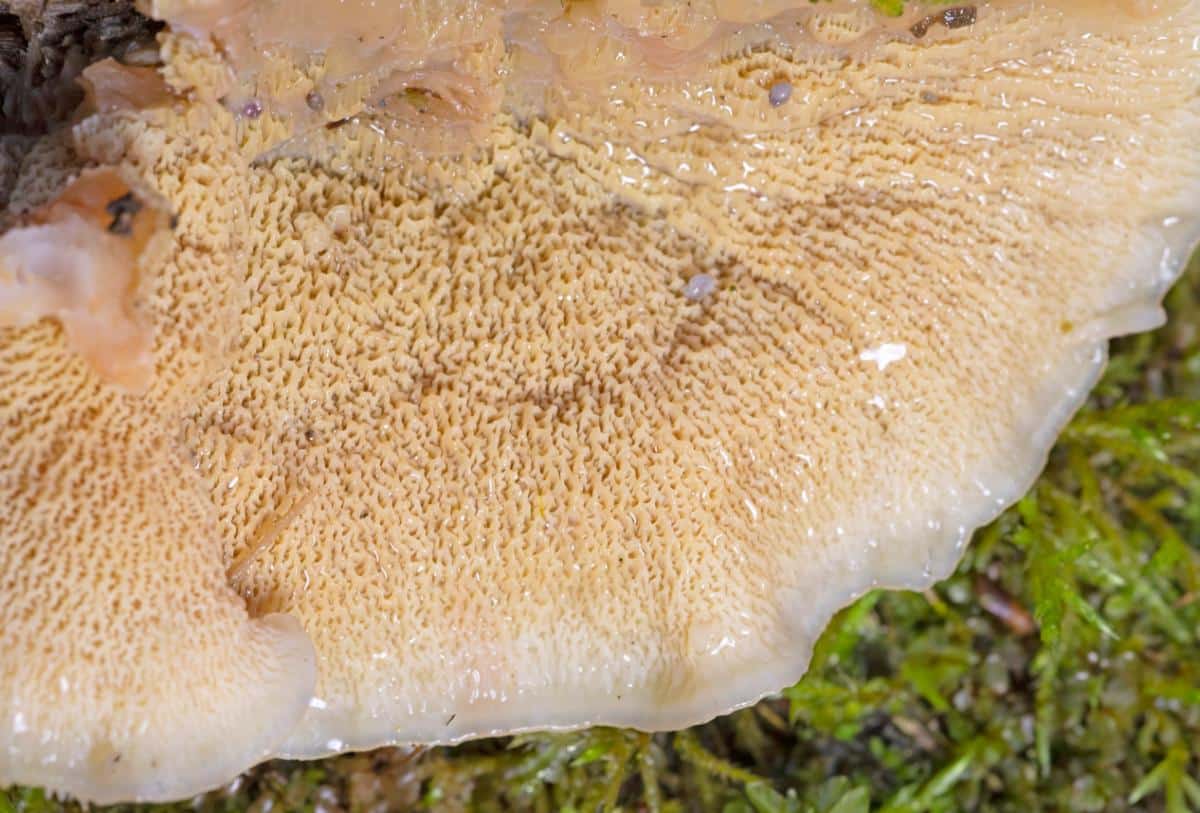
Common Questions About Trembling Phlebia
Is trembling phlebia edible?
No, trembling phlebia is considered inedible due to its rubbery texture and bland taste. It’s not toxic, though; it’s just not enjoyable to eat.
What role does trembling phlebia play in forest ecosystems?
Trembling phlebia, also known as the jelly rot fungus, is an important decomposer in forest ecosystems. As a white rot fungus, it breaks down dead wood and recycles nutrients back into the soil, which supports new forest growth.
Are there any potential medicinal uses for trembling phlebia?
While not traditionally used in medicine, recent research has shown that trembling phlebia exhibits higher ACE-inhibition activity than some well-known medicinal fungi. This property could potentially be useful in developing treatments for hypertension. More research is needed, though.

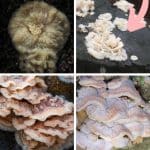
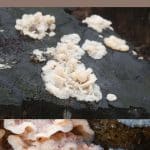
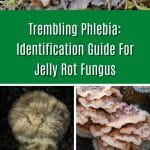
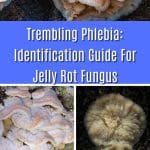

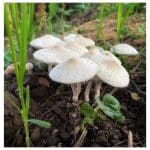
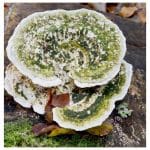
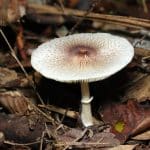
Leave a Reply